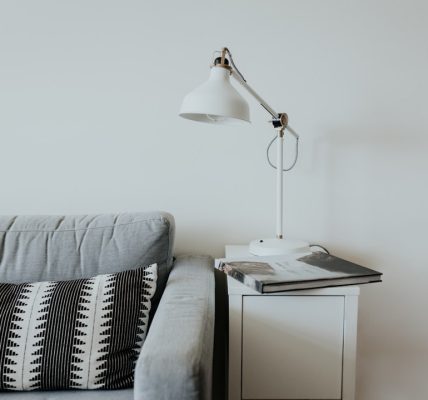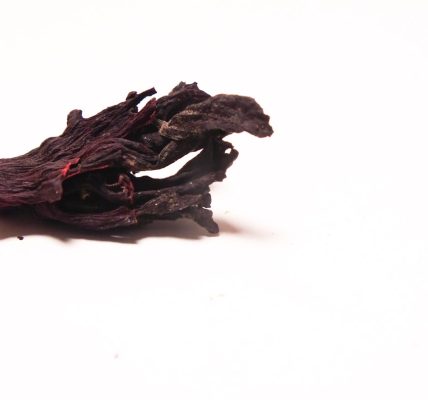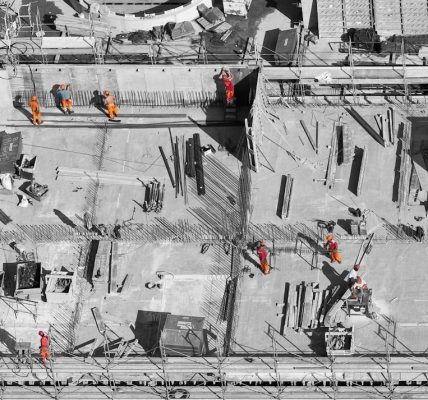Scribe molding is a type of decorative trim that is used to cover gaps between cabinets, walls, and other surfaces. It is typically made from wood, although it can also be made from other materials such as MDF or PVScribe molding is designed to be flexible and can be easily shaped to fit the contours of the surfaces it is covering. It is often used in kitchen and bathroom cabinetry to create a seamless and polished look. Scribe molding is available in a variety of styles and finishes, making it easy to find the perfect match for your home decor.
Scribe molding is an essential element in finishing off the look of your cabinetry. It provides a clean and polished appearance by covering any gaps or inconsistencies between the cabinets and the walls. This type of molding is also commonly used to cover gaps between countertops and walls, as well as between built-in furniture and the surrounding surfaces. Scribe molding is an important detail that can make a big difference in the overall appearance of your home. It adds a touch of elegance and sophistication to any room, and can help to tie together the design elements of your space.
Key Takeaways
- Scribe molding is a thin strip of wood used to cover gaps between cabinets, walls, and ceilings
- Types of scribe molding include T-molding, quarter round, and shoe molding
- Benefits of using scribe molding include covering gaps, adding a finished look, and protecting edges
- Installing scribe molding involves measuring, cutting, and attaching the molding to the desired area
- Scribe molding can be used in various rooms such as the kitchen, bathroom, and living room to add a decorative touch
Different Types of Scribe Molding
There are several different types of scribe molding available, each with its own unique characteristics and benefits. One popular option is solid wood scribe molding, which is made from high-quality hardwood such as oak, maple, or cherry. This type of molding is durable and can be stained or painted to match the color of your cabinets or walls. Another option is MDF scribe molding, which is made from medium-density fiberboard. MDF scribe molding is a more affordable option and is available in a variety of finishes, making it easy to find the perfect match for your home decor.
PVC scribe molding is another popular choice, especially for use in areas that are prone to moisture such as kitchens and bathrooms. PVC scribe molding is resistant to water damage and is easy to clean, making it a practical option for these spaces. In addition to these options, there are also flexible scribe moldings available that can be easily shaped to fit the contours of any surface. This type of molding is ideal for covering irregularities and gaps, and can be a great solution for achieving a seamless look in your home.
Benefits of Using Scribe Molding in Your Home
There are several benefits to using scribe molding in your home. One of the main advantages is that it provides a finished and polished look to your cabinetry and other built-in furniture. Scribe molding covers any gaps or inconsistencies between the cabinets and the surrounding surfaces, creating a seamless and cohesive appearance. This can help to elevate the overall design of your space and add a touch of elegance to your home.
In addition to its aesthetic benefits, scribe molding also serves a practical purpose by protecting the edges of your cabinets and countertops. By covering any gaps or exposed edges, scribe molding helps to prevent damage from moisture, dirt, and other debris. This can help to extend the lifespan of your cabinetry and built-in furniture, saving you time and money on repairs and replacements in the long run. Scribe molding also provides a smooth transition between different surfaces, creating a more visually appealing and harmonious look in your home.
How to Install Scribe Molding
| Step | Description |
|---|---|
| 1 | Measure the length of the area where the scribe molding will be installed |
| 2 | Cut the scribe molding to the measured length using a miter saw |
| 3 | Place the scribe molding in position and mark any necessary angles for corners |
| 4 | Cut the angles using a miter saw |
| 5 | Attach the scribe molding to the wall using a nail gun or adhesive |
| 6 | Fill any nail holes with wood filler and sand the molding for a smooth finish |
Installing scribe molding is a relatively simple process that can be completed with just a few basic tools. To begin, measure the length of the area where you will be installing the molding and cut the scribe molding to size using a miter saw or handsaw. Next, use a brad nailer or finish nails to secure the molding in place, making sure to leave a small gap between the molding and the surface it is covering to allow for expansion and contraction. Once the molding is in place, fill any nail holes with wood filler and sand the surface smooth.
If you are installing flexible scribe molding, you may need to use a heat gun to soften the material before shaping it to fit the contours of the surface. Once the molding has been shaped, it can be secured in place using adhesive or finishing nails. When installing PVC scribe molding, it is important to use PVC-compatible adhesive and fasteners to ensure a secure and long-lasting installation. With just a few simple steps, you can easily install scribe molding in your home to achieve a polished and seamless look.
Scribe Molding Design Ideas for Different Rooms
Scribe molding can be used in a variety of ways to enhance the design of different rooms in your home. In the kitchen, scribe molding can be used to cover gaps between cabinets and walls, as well as between countertops and backsplashes. This creates a clean and polished look that elevates the overall design of the space. In the bathroom, scribe molding can be used to cover gaps between vanity cabinets and walls, as well as between countertops and tiled surfaces. This helps to create a cohesive and finished appearance that adds a touch of sophistication to the room.
In living areas and bedrooms, scribe molding can be used to cover gaps between built-in furniture such as bookcases or entertainment centers and the surrounding walls. This creates a seamless look that ties together the design elements of the room. Scribe molding can also be used as a decorative accent on furniture pieces such as dressers or armoires, adding an extra touch of elegance to the space. With its versatility and ability to be customized to fit any surface, scribe molding offers endless design possibilities for every room in your home.
Maintaining and Cleaning Scribe Molding

Maintaining scribe molding is relatively simple and requires just a few basic steps to keep it looking its best. Regular dusting with a soft cloth or duster can help to remove any dirt or debris that may accumulate on the surface of the molding. For more stubborn dirt or stains, a mild soap solution can be used to gently clean the molding, followed by a thorough rinse with clean water. It is important to avoid using harsh chemicals or abrasive cleaners on scribe molding, as these can damage the finish and appearance of the molding.
In areas that are prone to moisture such as kitchens and bathrooms, it is important to regularly check for any signs of water damage or mold growth on the scribe molding. Any issues should be addressed promptly to prevent further damage and maintain the integrity of the molding. With proper care and maintenance, scribe molding can continue to enhance the design of your home for years to come.
Where to Purchase Scribe Molding for Your Home
Scribe molding can be purchased from a variety of sources, including home improvement stores, cabinet manufacturers, and online retailers. When shopping for scribe molding, it is important to consider the material, style, and finish that will best complement your home decor. Many retailers offer a wide selection of scribe molding options, making it easy to find the perfect match for your space.
Home improvement stores often carry a range of scribe molding options in different materials and finishes, making it convenient to find everything you need for your project in one place. Cabinet manufacturers may also offer scribe molding that is specifically designed to coordinate with their cabinetry lines, ensuring a seamless match for your home. Online retailers provide access to an even wider selection of scribe molding options, allowing you to easily compare styles and prices from the comfort of your own home.
In conclusion, scribe molding is an essential element in achieving a polished and seamless look in your home. With its versatility, practical benefits, and aesthetic appeal, scribe molding offers endless design possibilities for every room in your home. Whether you are looking to cover gaps between cabinets and walls, protect the edges of your countertops, or add a decorative accent to your furniture, scribe molding is an easy and effective solution that can elevate the overall design of your space. With just a few simple steps, you can install scribe molding in your home to achieve a finished and polished look that will enhance the beauty of your space for years to come.
If you’re looking for some inspiration on how to use scribe molding in your home, check out this article on ladyviet.net. The article provides tips and ideas on how to incorporate scribe molding into your interior design, whether it’s for adding a finishing touch to your kitchen cabinets or creating a seamless transition between your walls and baseboards. With the help of this article, you’ll be able to elevate the look of your home with the use of scribe molding.
FAQs
What is scribe molding?
Scribe molding is a type of trim used to cover gaps between cabinets, walls, or other surfaces. It is often used in kitchen and bathroom cabinetry installations to create a seamless and finished look.
What is the purpose of scribe molding?
The main purpose of scribe molding is to cover any gaps or inconsistencies between cabinets and walls, creating a clean and polished appearance. It also helps to protect the edges of the cabinets from damage.
What are the common materials used for scribe molding?
Scribe molding is typically made from wood, such as oak, maple, or cherry, to match the cabinet material. It can also be made from MDF (medium-density fiberboard) for a more affordable option.
How is scribe molding installed?
Scribe molding is installed by cutting it to the appropriate length and then attaching it to the cabinets using nails or adhesive. It is important to ensure a precise and snug fit to achieve a professional finish.
Can scribe molding be painted or stained?
Yes, scribe molding can be painted or stained to match the color of the cabinets or the surrounding decor. This allows for customization and seamless integration with the overall design.




